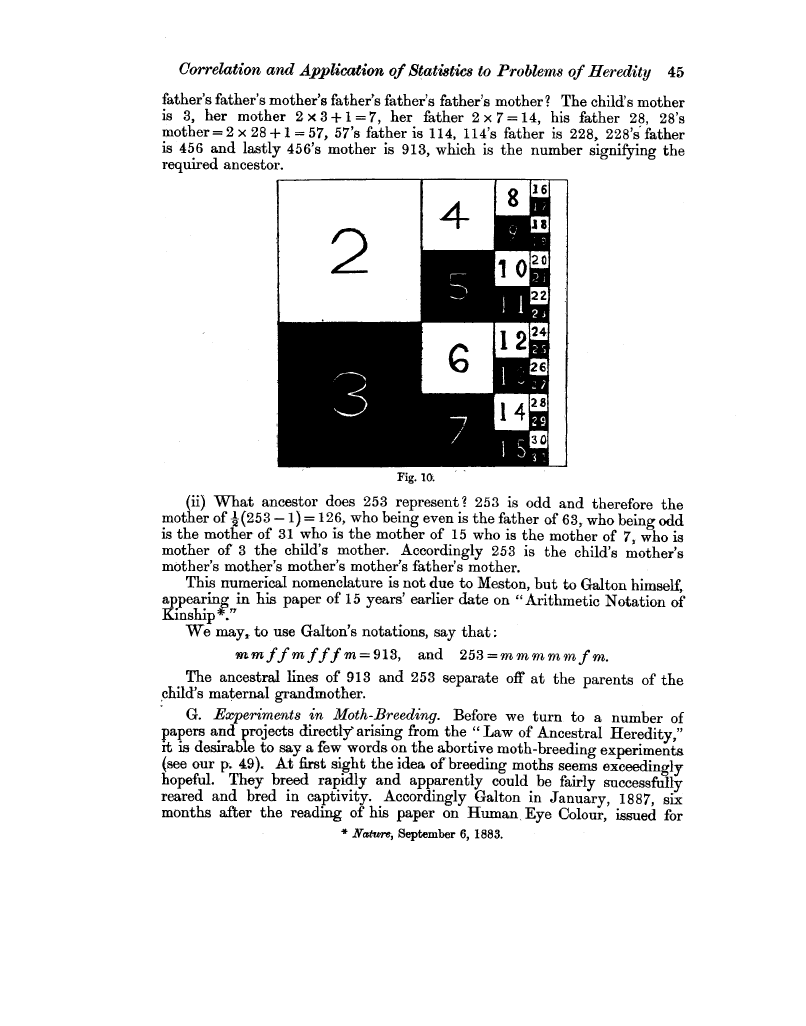| ||||||

OCR Rendition - approximate
Correlation and Application of Statistics to Problems of Heredity 45 father's father's mother's father's father's father's mother? The child's mother is 3, her mother 2 x 3 + 1= 7, her father 2 x 7 = 14, his father 28, 28's mother= 2 x 28 + I = 57, 57's father is 114, 114's father is 228, 228's father is 456 and lastly 456's mother is 913, which is the number signifying the required ancestor.  Fig. I0. (ii) What ancestor does 253 represent? 253 is odd and therefore the mother of 1 (253 -1)=126, who being even is the father of 63, who being odd is the mother of 31 who is the mother of 15 who is the mother of 7, who is mother of 3 the child's mother. Accordingly 253 is the child's mother's mother's mother's mother's mother's father's mother. This numerical nomenclature is not due to Meston, but to Galton himself, appearinin his paper of 15 years' earlier date on "Arithmetic Notation of Kinship*." We may, to use Galton's notations, say that =mffmfffm=913, and 253=mmmmmfm. The ancestral lines of 913 and 253 separate off at the parents of the ,child's maternal grandmother. G. Experiments in Moth-Breeding. Before we turn to a number of papers and projects directly arising from the " Law of Ancestral Heredity," it is desirable to say a few words on the abortive moth-breeding experiments (see our p. 49). At first sight the idea of breeding moths seems exceedingly hopeful. They breed rapidly and apparently could be fairly successfully reared and bred in captivity. Accordingly Galton in January, 1887, six months after the reading of his paper on Human, Eye Colour, issued for * Nature, September 6, 1883.
|